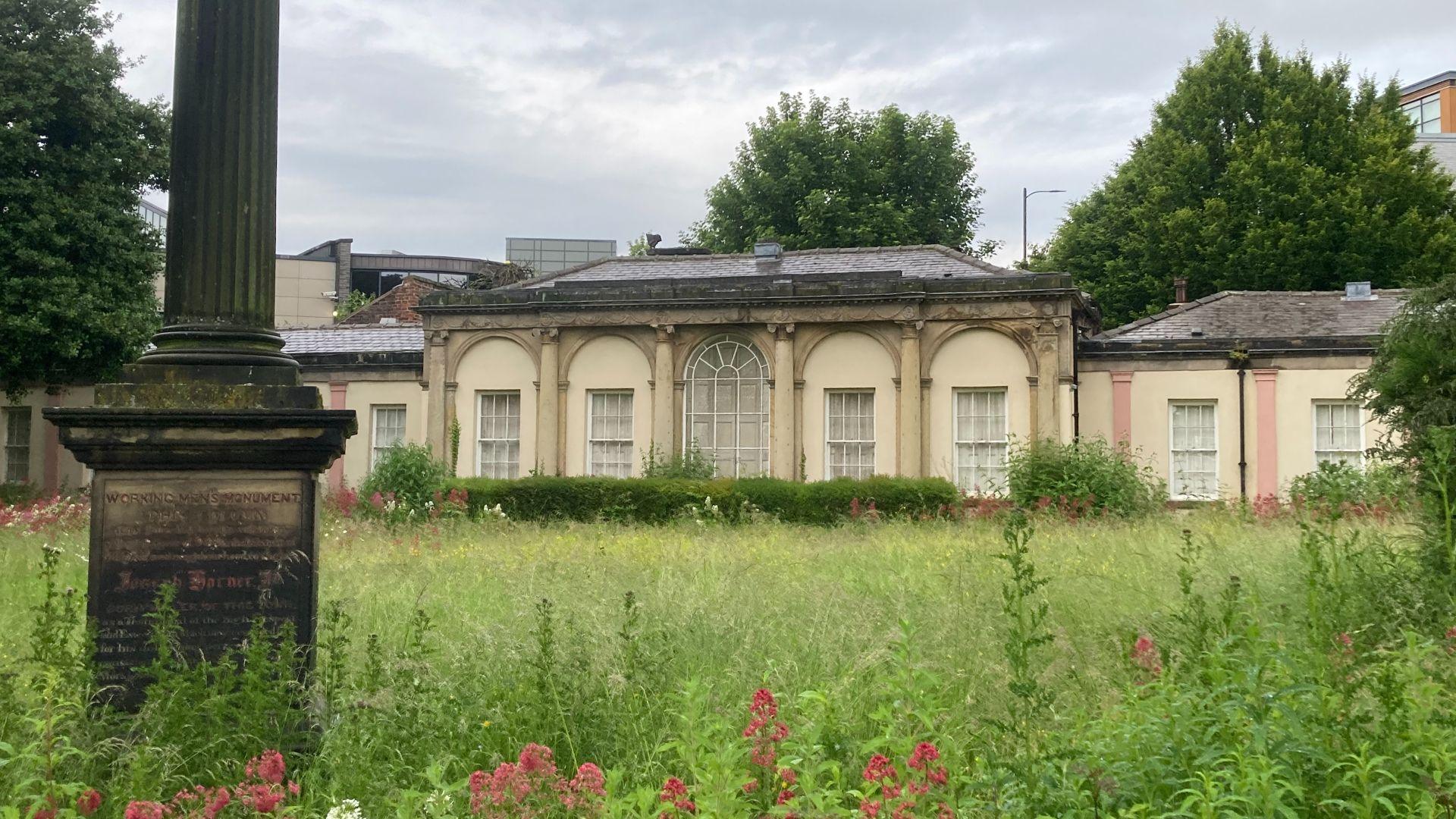Dancing bear art to remain on landmark building

The dancing bear artwork was created by Ekaterina Sheath
- Published
An art installation featuring a picture of a dancing bear is to remain in place on a landmark 19th Century building in Wakefield city centre for a further three years.
The design, by artist Ekaterina Sheath, is a nod to when The Lodge and Milnes’ Orangery were part of a zoological and botanical gardens.
During the 1800s, the site was home to a dancing bear which was kept in the grounds and which went on to maul its keeper’s wife to death.
Permission for the commissioned artwork, which is part of a project telling hidden stories of the past, has been extended by Wakefield Council.
The history of the buildings, on Back Lane next to the railway station, dates back to the early 19th Century.
Planning permission for the artwork, along with another design featuring flowers, was initially granted in 2022, according to the Local Democracy Reporting Service.
The works were commissioned as part of the Westgate heritage action zone project, which aims to breathe new life into the city’s historic streets and tell forgotten stories.

The site includes two buildings which previously housed a school, public baths and a chapel
The Grade II*-listed Orangery was built in about1800 within the garden of the home of Pemberton Milnes, a wealthy cloth manufacturer.
The Lodge building was later added to the Orangery site when it became a zoological garden, which contained a bear pit.
The Orangery became permanently separated from the Milnes’ house, which still fronts onto Westgate, when Wakefield Westgate railway station was built.
Wakefield Council planning officers approved the application to allow the artworks to stay in place for an extended 36-month period.
“Public art can be a useful tool to stimulate debate and engagement with history," a report to the council said.
Follow BBC Yorkshire on Facebook, external, X (formerly Twitter), external, and Instagram, external. Send your story ideas to yorkslincs.news@bbc.co.uk, external.